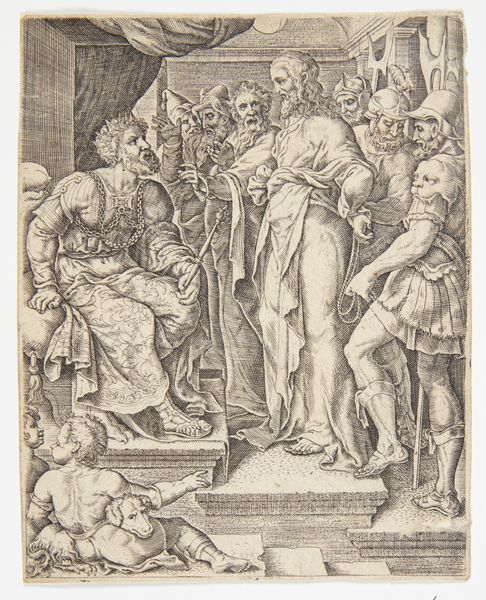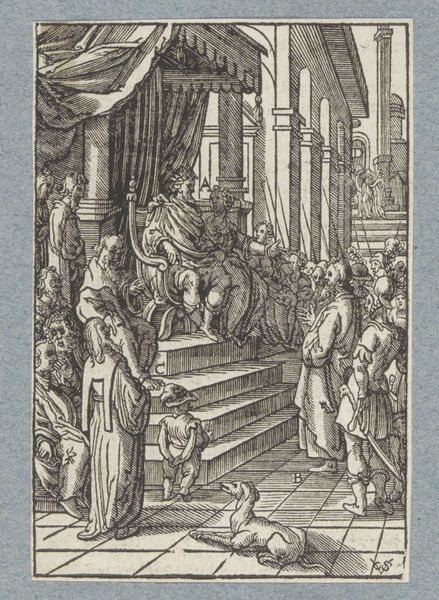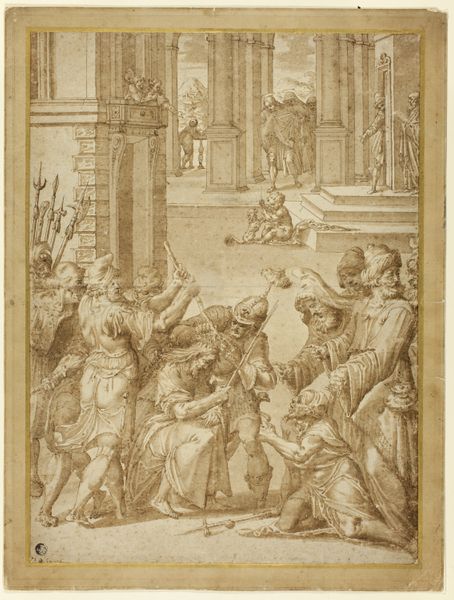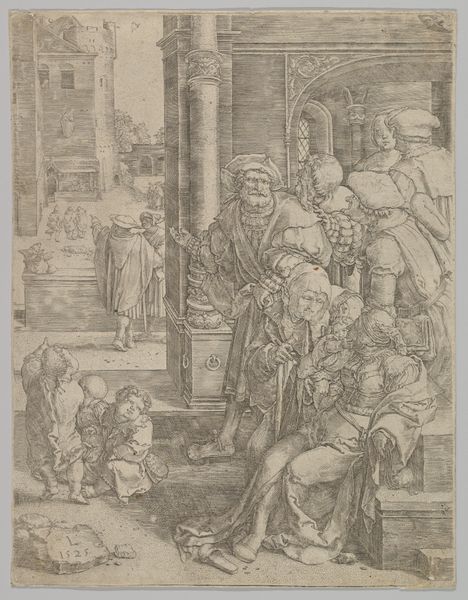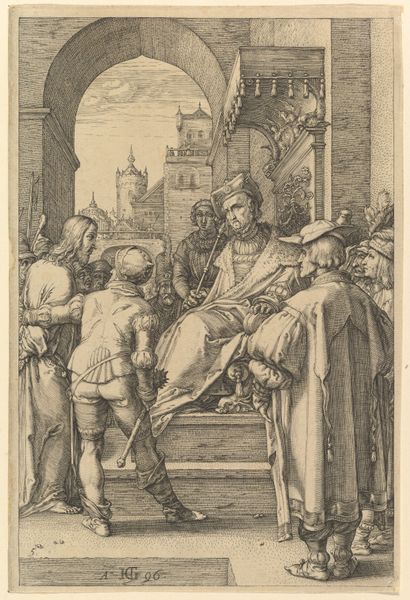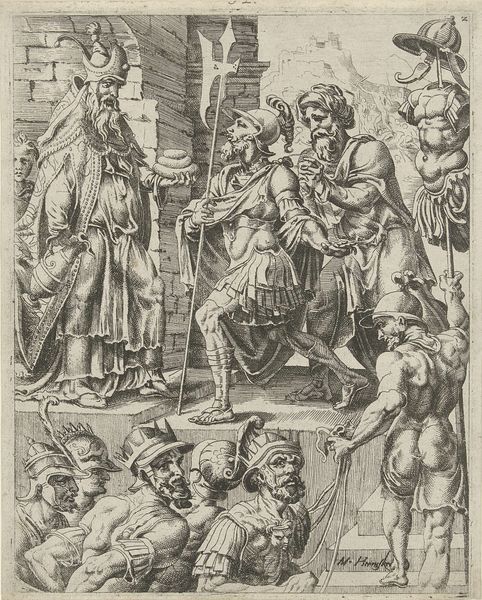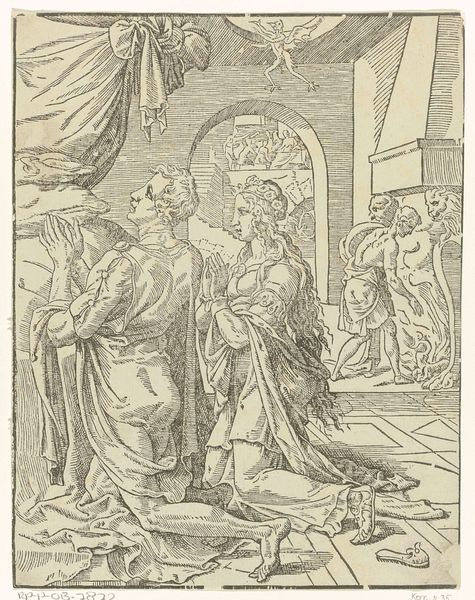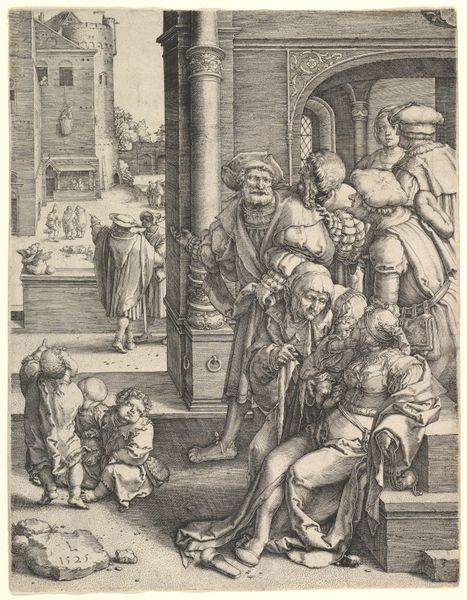
drawing, paper, ink, pen
#
drawing
#
narrative-art
#
charcoal drawing
#
figuration
#
paper
#
ink
#
pencil drawing
#
pen
#
genre-painting
#
northern-renaissance
Dimensions: height 243 mm, width 186 mm
Copyright: Rijks Museum: Open Domain
Curator: Hendrick Goudt created this detailed drawing, “Virgilius in de mand,” sometime between 1596 and 1598 using pen, ink, and charcoal on paper. My initial thought is how calm and collected it looks. A real sense of composure emanates from it. Editor: It’s intriguing how Goudt uses such fine lines to depict a rather scandalous scene, Virgil’s humiliation, playing with themes of power and gender in a very patriarchal society. The aged Virgil tricked by a woman… It is rather telling. Curator: Absolutely. The composition itself leads the eye, doesn't it? The contrast between the cluster of figures and that detailed building in the background...it really gives the piece a sense of depth, even if everything is drawn in similar tonalities. What strikes me most is the detail, how Goudt achieves texture with only pen, ink and charcoal. Editor: I find it captivating how this portrayal echoes earlier Renaissance anxieties about female agency, seen through the lens of classical narratives. Consider how this scene might have reinforced or challenged the prevailing patriarchal structures of the time, in which female assertiveness was often equated with deceit. Curator: It certainly feels like he is trying to tell a tale—or make some subtle point, it must be said. Is it that the man is the butt of a joke or something far deeper rooted in misogyny. A visual sermon about something rather questionable—what do you feel it is preaching? Editor: I read it as a cautionary narrative – perhaps even a warning about how even the wisest and most powerful men like Virgil can be vulnerable to deception, particularly by women, reflecting the misogynistic undercurrents pervasive throughout history, when those with perceived power see that very thing slip from their grip. The scene could also explore power dynamics – class as much as gender – we cannot forget, many would likely have hated that Virgil, the son of a potter, attained so much prominence. Curator: Yes, I completely agree, an anxious work expressing societal paranoia with women, but a fascinating capture into the mindset of the people. Thanks for sharing. Editor: It’s a powerful image that reveals the era’s societal fabric and assumptions, while reminding us of art’s lasting ability to echo these concerns across centuries.
Comments
No comments
Be the first to comment and join the conversation on the ultimate creative platform.
